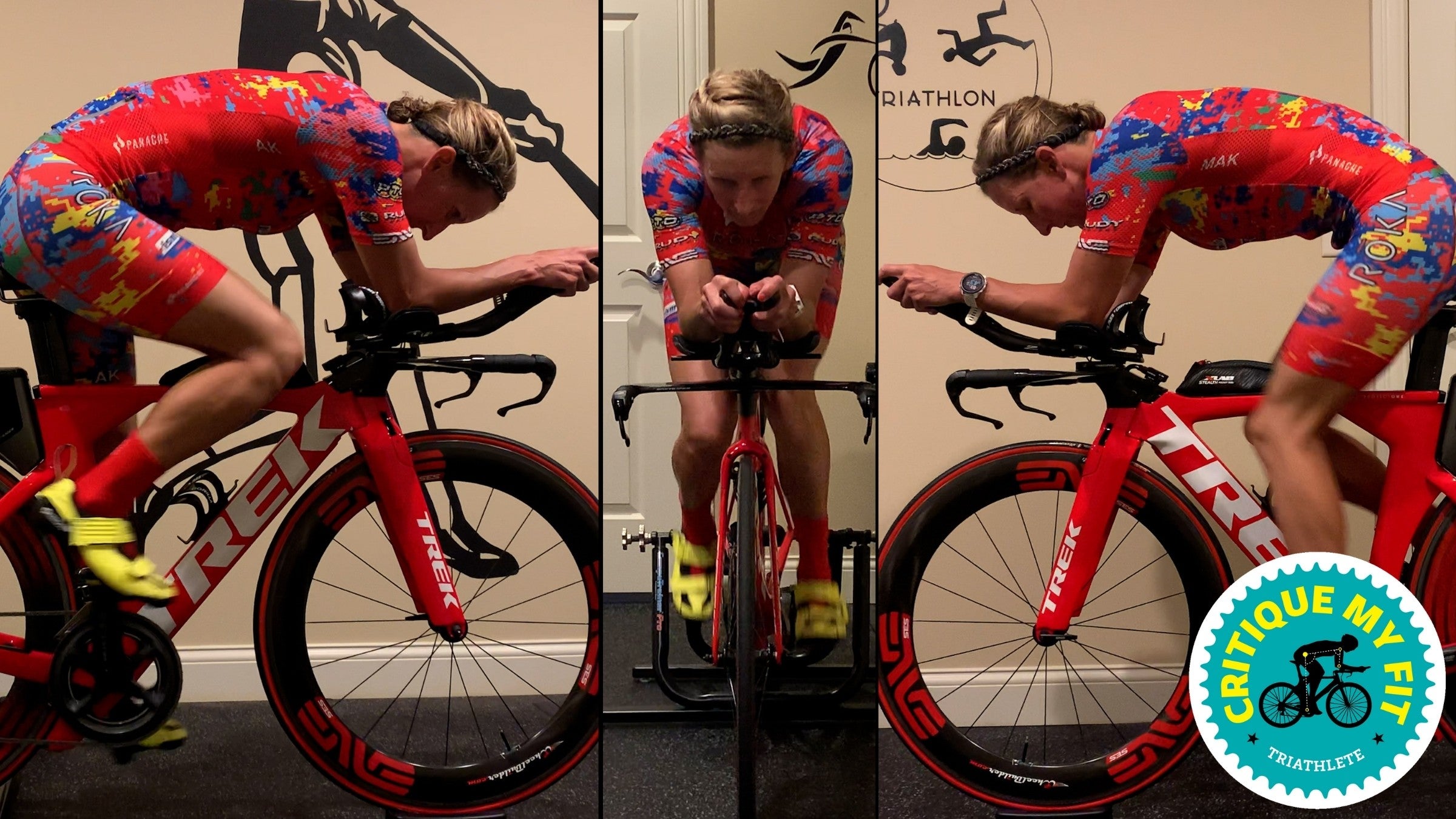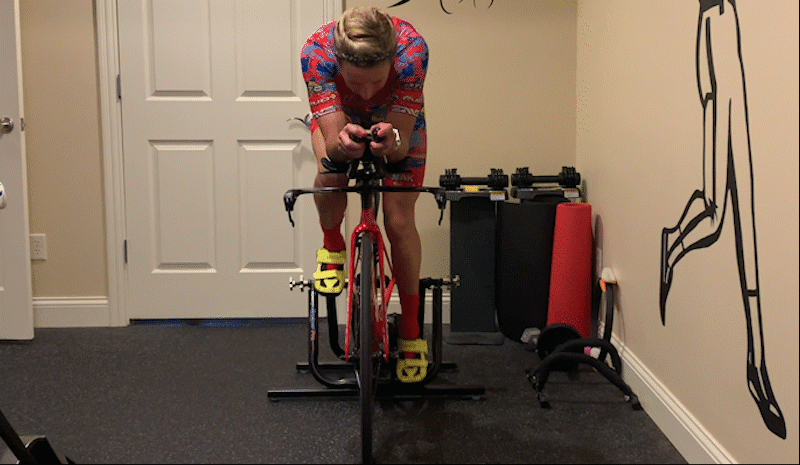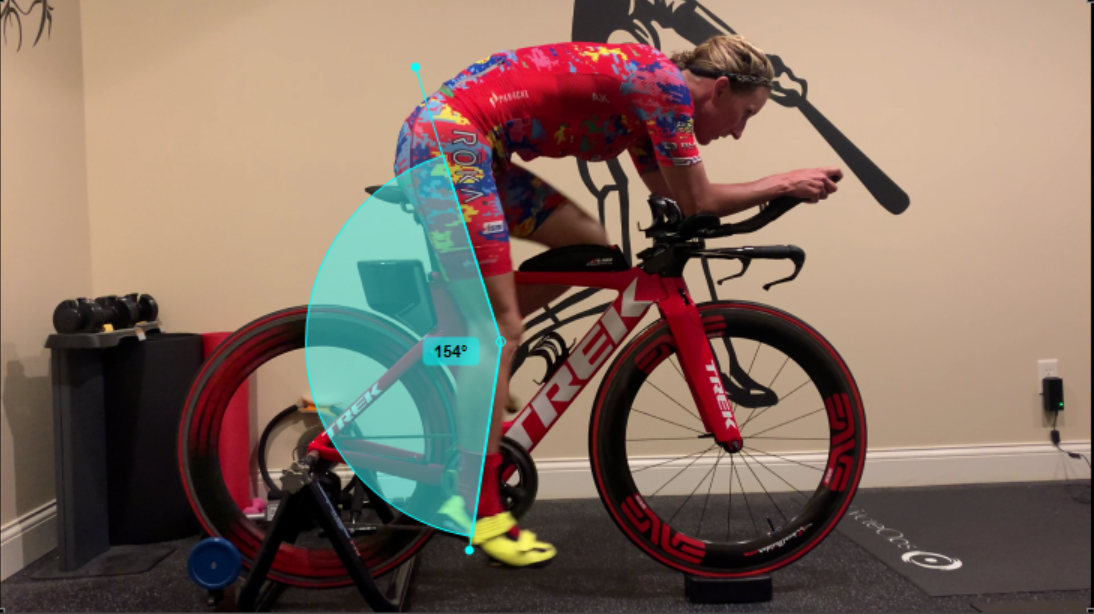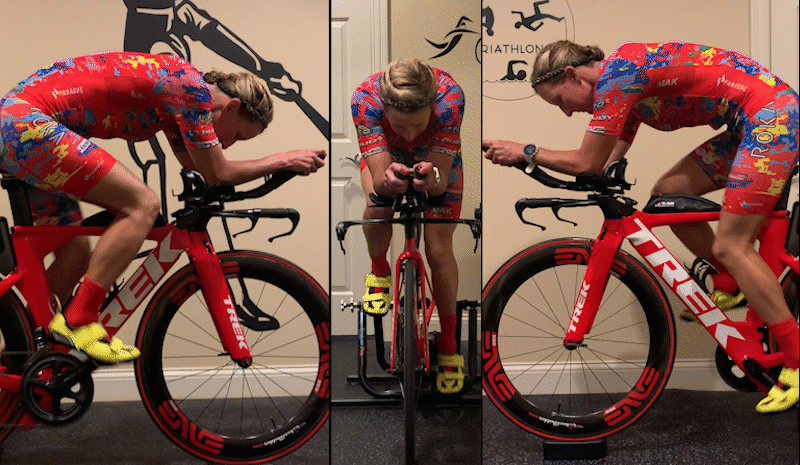Critique My Fit: Diving Into Meredith Kessler’s Setup

Dear Jonathan
In the past, I have had bike fitters take more pressure off my high hamstrings which has been helpful as those can often cause grief yet this hasn’t been an issue since 2017. Currently, as I get older, my upper back/neck area can be a pain point at times—and of course I’m always making sure my knees do not cause me any pain!
Craig Upton helped me with the tight high hamstrings, and I believe it was a slight change in saddle height. His fit was when I was on a different bike—the Ventum. I did not like the Ventum for me by the way, if this helps at all. I loved my Boardman the most and my Cannondale next; my current Trek is probably next after my Boardman, but I regret that I sold my Boardman!
In addition, in 2017 I had a baby, which totally took away any high hamstring drama with all those baby blood cells…haha!
As for knees, that was ALL about placement of the cleats on my Bont shoes! This has been key as a near 43-year-old! They seem to be set right now. I will say, if my saddle is ever too low for any reason, the first place I feel it is in my knees!
Below are my measurements:
| Height | 5 feet 8 inches |
| Weight | 130 pounds |
| Inseam | 28 inches |
| Bike Size | Small 2019 Trek Speed Concept frame |
Below are the details to my most recent bike fit back in December 2019. And yes, with the COVID year, I’m still on the same bike as I love it!
| Bike | 2019 Trek Speed Concept |
| Saddle | ISM PN 1.0 |
| Handlebars | Bontrager |
| Pedals | Shimano |
Most Recent Proper Bike Fit Numbers
VeloScience Pro Triathlon Fitting
December 5, 2019
| A Seat Height | 700mm |
| B Reach | 840 bar end 492 pad center |
| C Drop | 86 to pads 145 to bullhorns |
| D Setback | 3 mm behind BB |
| E Bar angle | +14º |
| F Stem length | n/a |
| G Stem angle | -4º |
| K Saddle tilt | Nose down 2º |
| Crank length | 165 |

Hi Meredith,
Thanks for sharing your videos and a bit of information about what you’ve experimented with in the past. Generally speaking, bikes should fit people fairly similarly but each person’s own nuances and experiences are what keeps this interesting. It sounds like you’ve had your share of issues over your career and that you are very protective of your knees—as you should be!
Critiquing someone’s fit from photos or videos can be tough since we aren’t there together to do any kind of physical evaluation or to experiment with different solutions or to problem solve together, as we could in a live fit session. With that being said, I can see a few issues with your bike fit that you may want to consider looking into. I like the ISM PN1.0 saddle that you are using as well as the 165mm cranks that you have on your bike, and your upper body, shoulder angle and head position all look great on the bike. I do have some concerns about your seat height and knee tracking to discuss.
Saddle Height
When I first looked at our videos, my first impression was that your saddle height is quite a bit too high, judging by the extension of your knee joints, the pointing of your toes and the rocking motion of your hips from side to side. When a saddle height is too high, it will generally create issues along the backside of your body. You may feel some pain or discomfort behind the knee, in your glute, or in your back.
On the flip side of the spectrum when a saddle is too low, it can cause pain in the front of the knee like you’ve described. My best guess is that your saddle height is as high as it is because you’ve figured out over time that keeping the saddle this high keeps the front of your knees happy, and that you’ve been lucky enough to avoid an issue along the back of your body as a result of it. Shortening the length of your crank arm may also be helping to keep the knee pain issues at bay, since a shorter length crank arm has a similar effect on the knee as raising the saddle height when it comes to avoiding pain in the front of the knee.
If you take a look at the two screenshots from below that I took of your video of the same exact frame, you’ll see that one has a knee angle measurement superimposed on it from some analysis software. Drawing angles on top of screenshots is far from the best way to extract meaningful information, but it helps to explain what I see. You’ll see that your knee extension angle is being measured at 154 degrees in this particular frame.


There are different schools of thought related to knee extension, which vary based on who you are asking, cycling discipline, and the exact reference points taken, but just about all of them would agree that a knee bend of 154 degrees is excessive. A maximum knee extension angle of about 140-145 degrees would be more normal by most standards.
Hamstring Pain
You mentioned that you had pain high in your hamstrings which is almost always caused by either a saddle that is too wide or a saddle that is too high. You also mentioned that this issue went away after you gave birth to your child which probably is not a coincidence at all since the hormones released during pregnancy can elongate and heal tendons and ligaments.
While many of the ISM saddles are similar, your saddle, the ISM PN1.0 does stand out a bit in that it is diamond-shaped while other saddles from ISM—like my favorites the PN3.0 and PS1.0 have a bit more curvature to their nose (when viewed from above).
This shaping means that the PN3.0 and PS1.0 would effectively be a little bit narrower where you actually sit on them (rather than the tip of the saddle where nose width is actually measured) than the PN1.0 you are using. A saddle that is too wide can create pressure on your hamstring tendons near their attachment points which can lead to tendonitis, especially when coupled with a saddle height that is on the high side that will further stress the hamstring tendons.
Knee Issues
Now, back to your knees: When I look at your videos from the front view, I can see that your knees do not track up and down very well. Some people can get away with less than perfect tracking than others so I usually don’t like to intervene much when I see knee tracking “issues” if there isn’t a knee problem to point to, since making changes just for the sake of making changes isn’t necessarily productive. In your case, however, you have a history of knee issues, so correcting your knee tracking may be fruitful.

If you look closely at your videos, you’ll see that your left knee dives in towards the center of the bike a good deal while your right knee tracks much straighter. Tracking like this can be caused by a variety of factors and thankfully there are solutions available for most of them. I would start off by sliding your cleats as far to the outside part of your shoe as possible to simply get your foot stance a bit narrower which may reduce the buckling effect of your poor alignment. I would also consider that you might need some arch support in your cycling shoes or you could benefit from some wedges in your heel or under your cleat in order to improve alignment.
Poor knee alignment can also be caused by tightness in your adductor muscles or weakness in your glute muscles so it may be worth trying to work on these areas a bit as well. From a more global perspective and with my limited knowledge of your issues, my theory is that your underlying knee issues probably come from your knee tracking issues and not necessarily a seat height that is too low. Perhaps the greater bend in the knee at top dead center associated with a lower saddle height simply exacerbated the underlying problems.
If you were in my studio, I would definitely experiment with some methods to try and improve your knee tracking and then to see if we could lower your saddle without any issue. Lowering the saddle would reduce your chance of a new injury or of the return of the high hamstring issues, and I think it would quiet your hips down a bit on the saddle—which would lead to greater efficiency and better saddle comfort.
I also think that with a lower saddle height that your back would be better off. Your low back has a bit of a rounded posture to it, and I would hope that if you lowered your saddle you would be able to roll your hips slightly further forward—reducing tension in your back which would help with your shoulder and neck issues as well. In all likelihood, along with a lower saddle height and with less tension on your posterior chain, you could also probably stand to lower your handlebars a bit more to squeeze out a bit more free speed—who wouldn’t want that?
Best Regards,
Jonathan
Jon Blyer is the owner of Brooklyn-based ACME Bicycles, a Retül Certified Master Bike Fitter, and teacher at the Guru Academy in Bethel, CT.